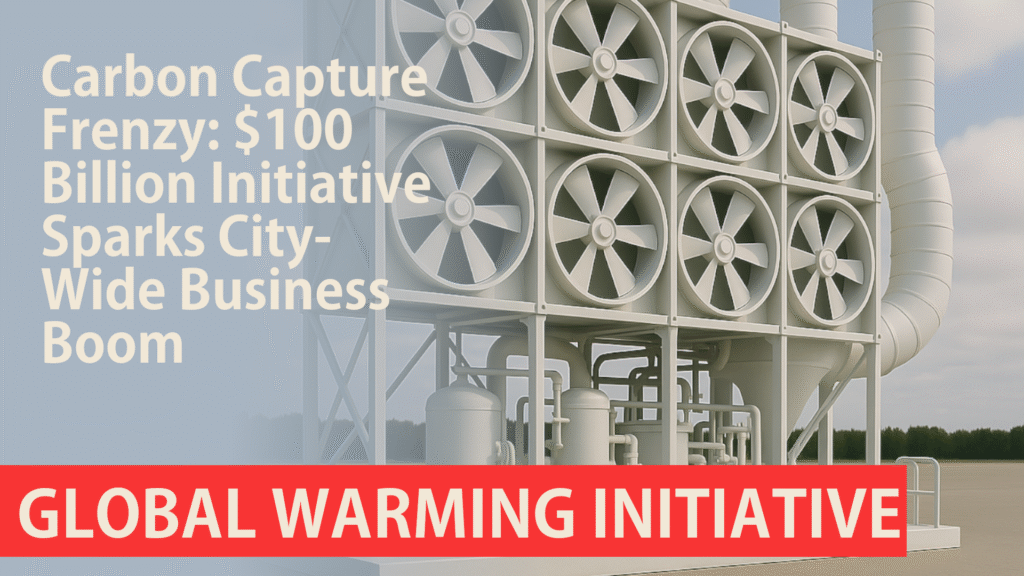
In a parallel world, the landscape of American industry – and indeed, the global energy market – is undergoing a seismic shift, largely driven by the U.S. Department of Energy’s ambitious “Project Phoenix,” a $100 billion initiative aimed at accelerating carbon capture technology deployment. The results have been nothing short of a frenzy, with businesses – many barely out of their garages – springing up in virtually every city and town across the nation, fueled by remarkably low initial investment.
Launched just eighteen months ago, Project Phoenix’s core goal was to catalyze rapid innovation and widespread adoption of carbon capture solutions. This was achieved through a tiered grant system, with initial micro-grants ranging from $50,000 to $250,000, followed by larger investment rounds for proven technologies. The immediate effect has been a surge in entrepreneurial activity, transforming towns into hubs for carbon capture development.
“We wanted to democratize innovation,” explained Dr. Alistair Finch, lead architect of Project Phoenix. “Traditionally, carbon capture was the domain of massive corporations. We believed that unlocking the creativity of individuals and small teams would be far more effective than top-down mandates.”
The results are startling. In Pittsburgh, a team of former robotics engineers has developed a “Carbon Weaver” – a network of drone-mounted CO2 capture units utilizing a novel mineral absorption process. In Anchorage, a retired geologist, Ms. Eleanor Hayes, is pioneering the construction of localized “Geo-Sinks” – underground caverns designed to permanently store captured carbon. In Miami, a group of marine biologists is exploring algae-based capture systems optimized for coastal environments.
“I never thought I’d be building a carbon capture system,” admitted Hayes during a recent interview. “The initial grant allowed me to purchase sensors and a small container. It’s incredible how much progress we’ve made with that single investment.”
However, the rapid proliferation of carbon capture businesses has also sparked significant debate and scrutiny. Critics express concerns about the scale of the technology, the long-term sustainability of many approaches, and the potential for localized environmental impacts.
“While the initial enthusiasm is commendable,” stated Dr. Lena Ramirez, a leading environmental economist at MIT, “we need to see a rigorous evaluation of the technology’s actual efficacy and its potential for unintended consequences. Many of these projects are operating on minimal regulatory oversight, and the long-term financial viability remains questionable.”
Further complicating matters is the growing backlog of applications for larger grants, creating a bottleneck in the funding process. The Department of Energy has faced accusations of bureaucratic delays and a lack of transparency in the selection process.
“The system is struggling to keep pace with the demand,” admitted Secretary of Energy William Harding in a press conference. “We are actively working to streamline the application process and ensure that funding is distributed equitably and efficiently.”
The future of Project Phoenix – and its impact on the global fight against climate change – remains uncertain. Whether this wave of entrepreneurial carbon capture can truly deliver on its promise, or whether it will ultimately prove to be a promising but ultimately unsustainable experiment, remains to be seen.